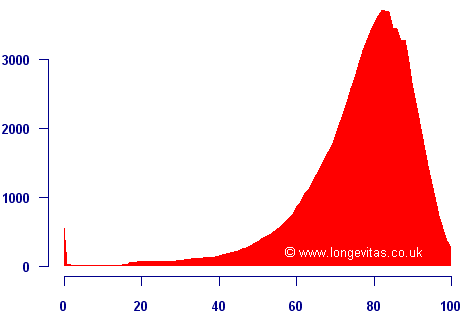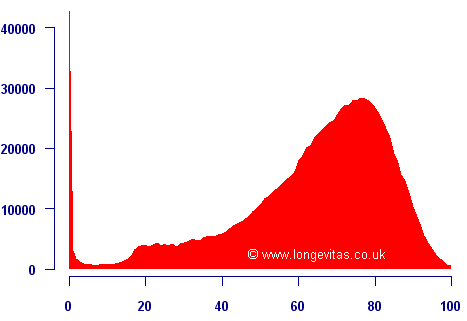Public-health targets for mortality improvements
Public-health officials typically allocate their resources using evidence-based methods. They know their annual budget for spending on health measures, and they typically want to save as many lives as they can with that fixed budget. A first step when looking at how to allocate resources would be to see the distribution of deaths by age, as shown below for males in the United Kingdom between 2004 and 2006:

From the above graph it would seem to make sense to allocate resources to diseases and ailments of old age, since this is where the vast bulk of deaths are in modern societies. However, public-health officials also know that saving the life of a new-born child is better than saving the life of a centenarian, if for no other reason than the former has an entire lifetime ahead of it. Thus, officials tend to look at the years of life lost at each age. This is simply the number of deaths at each age multiplied by the life expectancy at that age, as shown below:

The years-of-life-lost approach shifts the resource allocation in favour of the very young. The new graph shows that the most dramatic return on investment is in avoiding deaths in the first year of life. However, it is interesting to note that by far the greatest impact on adult mortality can be made by allocating resources to the 65-85 age range. This is also the key age range for annuity cashflows, since it is mortality improvements at these ages which have the biggest financial impact.
We thus have an interesting clash: the age range at which life insurers and pension funds least want to see mortality improvements is the same age range which planners will have identified as giving the greatest return on their investments in public health.


Add new comment